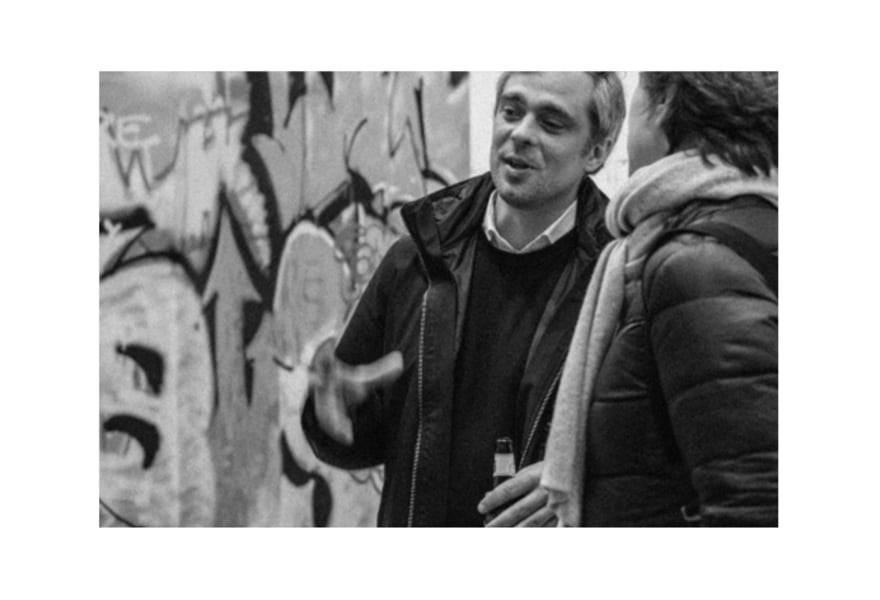01 may 2023, Yves Joris
Tommy Simoens: we go where our artists go
Antwerp’s Falconplein was once colloquially known as 'Red Square', a place where Russian and other sailors went looking for all kinds of fun. Since then, the neighbourhood has undergone a veritable metamorphosis and surprisingly, has become home to various art galleries. Tommy Simoens of the gallery of the same name is one of the individuals who is transforming this neighbourhood into an artistic place-to-be. GalleryViewer visited the area to talk to Tommy about his interests and passion for art.
Let's start with an obvious question. How did you get into this business and the art world?
I was born in the picturesque town of Machelen aan de Leie. One of my first summer jobs was as a hall attendant in the Roger Raveel Museum, which had just opened at the time and where Jan Hoet once nearly ran me over as he arrived for the museum’s opening. You might say that was one of my first (almost literal) encounters with contemporary art. I also owe a lot to some early mentors like William Ploegaert and Jean-Marie Bytebier. When I was studying in Antwerp, I was working for various artists, which is how I came into contact with Philippe Pirotte and Win van den Abbeele from the former Objectif_Exhibitions. I later curated Roberto Cuoghi's first international solo exhibition, an exhibition I still look back on with fondness. Now, 18 years later, we’re thinking about doing it again.
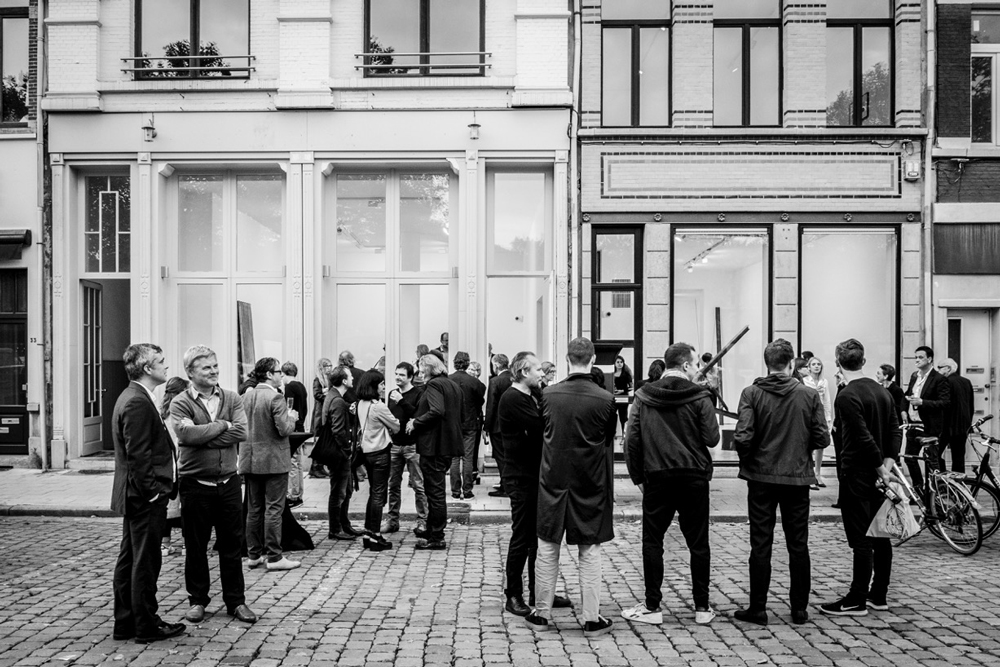
Opening of Gert Robijns exhibition “New Work” photo Jonas Lampens
What was your first job at a gallery? Or did you start your own gallery right away?
Over the years, I have been able to experience several galleries up close. Starting my own gallery became the logical next step when I began working more and more with artists like Gert Robijns and Yutaka Sone.
How would you describe your gallery's profile?
Those who are familiar with our programme know that the gallery does some pretty daring new productions. Our first exhibition, a solo by Gert Robijns, showed a horizontal copy of the gallery's facade. Later on, we brought four Chinese and two Mexican assistants from Yutaka Sone to Antwerp to create new works for the exhibition on the spot. Rirkrit Tiravanija once bricked up the entire gallery, another incredible project. Many artists have also gotten to know each other through our gallery, which has led to new (collaborative) relationships internationally.
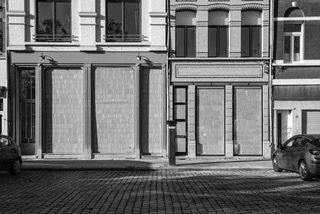
The gallery at our previous location in Antwerp South, bricked up by Rirkrit Tiravanija
All great examples of artistic cross-pollination. What do you think is the best part about being a gallery owner?
A few months ago, I was in Japan for the Okayama Art Summit. The focal point of the exhibition was a lawn by Rirkrit Tiravanija, where someone came to mow the grass every day in the letters DO WE DREAM UNDER THE SAME SKY. The Resetmobile tent by Geert Robijns was set up on that same lawn, in which a Free Curry performance by Ririkrit Tiravanija took place. A little further away, there were two new sculptures by Yutaka Sone. Occasionally, the sun also shone and you could hear the noise band from our most recent addition to the gallery, Shun Owada, playing in the distance. That gives you a sense of satisfaction as a gallery owner. Especially since our collector friends were also enjoying themselves. It felt like many years of work came together in just the right way.
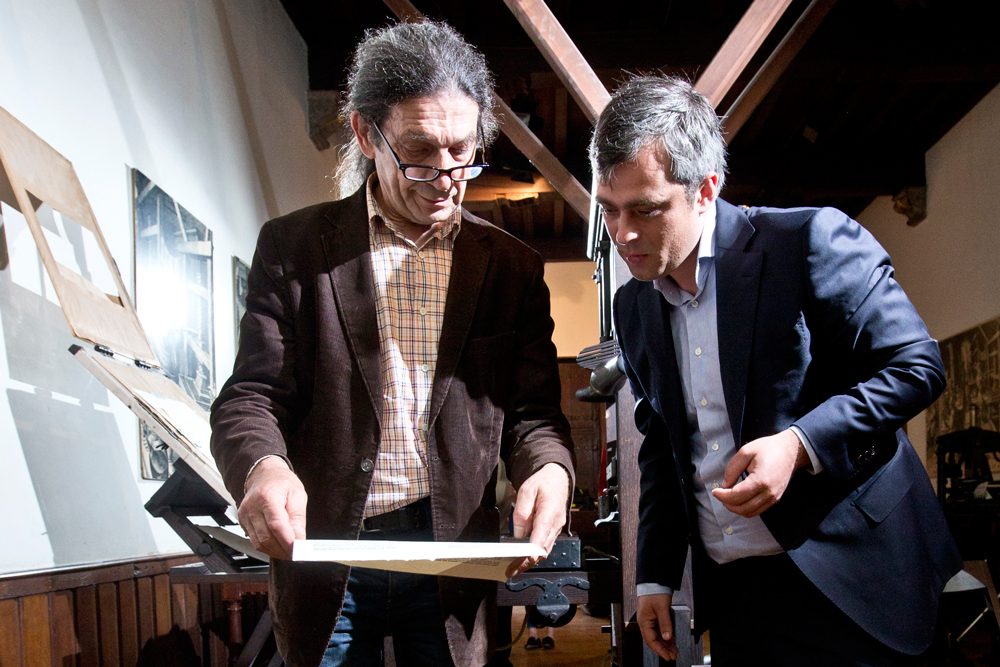
With Pavel Büchler for a production at the Plantin Moretus Museum in Antwerp. Photo Jonas Lampens
Which national and international galleries do you feel an affinity with?
In the early years of the gallery, when we were still in Antwerp South, Tim Van Laere came to almost all our openings. I thought it was a wonderful collegial gesture. And I also remember that the director of the Westbund Art Fair in Shanghai, Zhou Tiehai, once came to Europe for 24 hours to witness the opening of the Yutaka Sone exhibition. That creates a bond.
In an ideal world, which artist would you most like to represent?
In an ideal world, Gordon Matta-Clarck would still be alive and we would now be cutting BOZAR in two. (laughs)
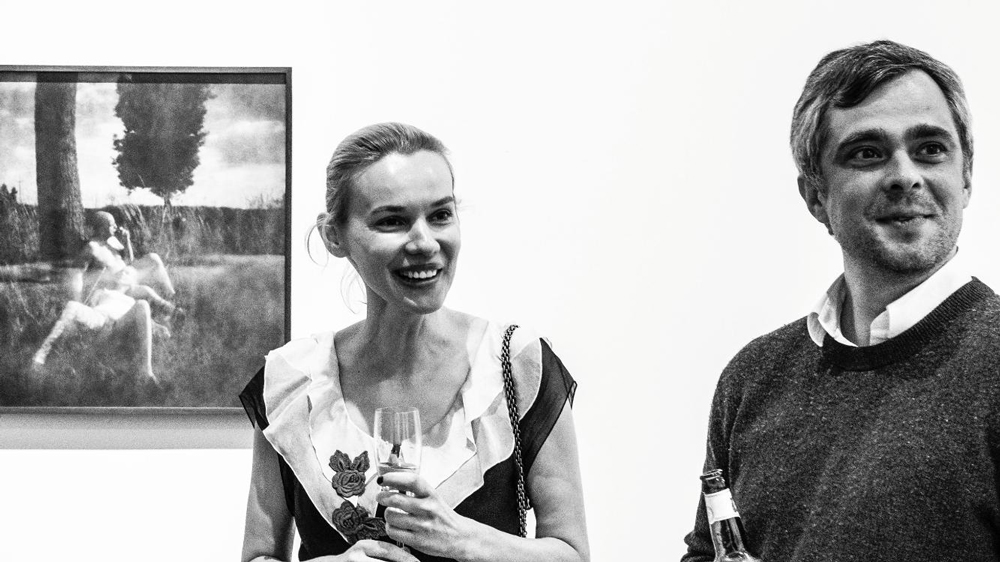
Opening of the exhibition Aneta Bartos: Family Portret
The art world is rapidly evolving. What has changed since you first got started?
When I think back to a few years ago, when everyone was feverishly wanting to release NFTs, and all collectors and galleries were exhausted from all the art fairs, I feel that a certain peace has returned. Prior to the pandemic, in my opinion, you also had this strange phenomenon where artists wanted to be gallery owners, collectors wanted to be curators, galleries wanted to be museums and curators and critics wanted to work in the commercial world. It's all falling into place a bit better now, I think.
As a gallery owner, you encounter dozens of fascinating artists and their work daily. Do you collect art personally?
My latest purchase is a set of 4,000-year-old artefacts from the Cucuteni-Trypillia civilization, one of the earliest modern civilizations in our region, geographically roughly where present-day Ukraine is. At one time, the leaders of the Soviet Union thought that their archaeological research showed that the Cucuteni lived under the communist system. When that turned out not to be the case, they banned further research into this community and removed all references from the school books.
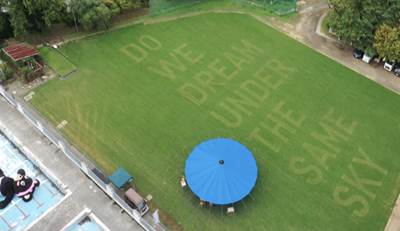
Work by Gert Robijns and Rirkrit Tiravanija at the Okayama Art Summit 2023. Photo Gert Robijns
How do you envision the future of the gallery world?
For our recent project, Chinese artist Lí Wei made a giant cake in the shape of the Mariupol theatre building and invited Ukrainians in Antwerp for cake and cava. The artist wants to keep the horror of exactly a year ago in the news a little longer.
On 23 April, we opened a group exhibition that documents all the international collaborations of Yutaka Sone on the basis of a series of vinyl records in combination with artworks from all artists involved. There were various musical performances during the exhibition.
To put it simply, opportunities for galleries grow along with the artists. No one knows what the future of the gallery world will look like, but for now we go where our artists go.
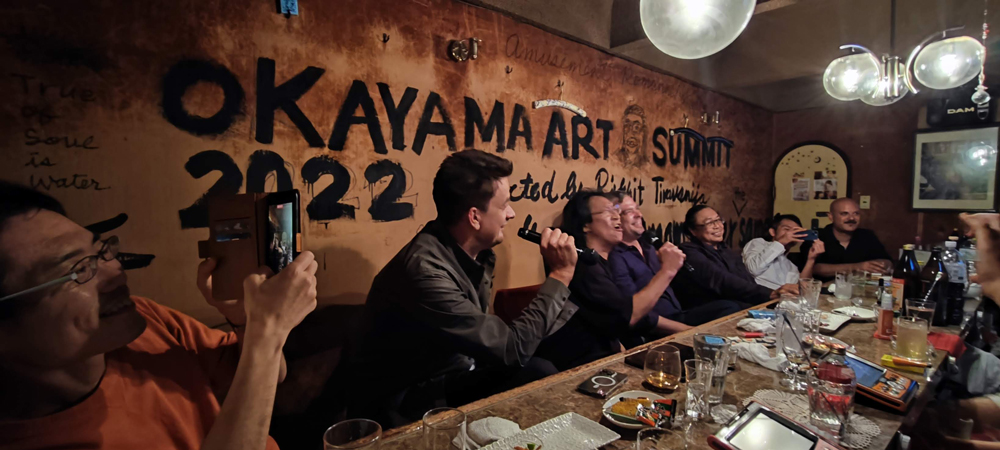
Karaoke with Gert Robijns, Yutaka Sone and Rirkrit Tiravanija after the opening of the Okayama Art Summit 2023. Photo Caroline Van Dooren
